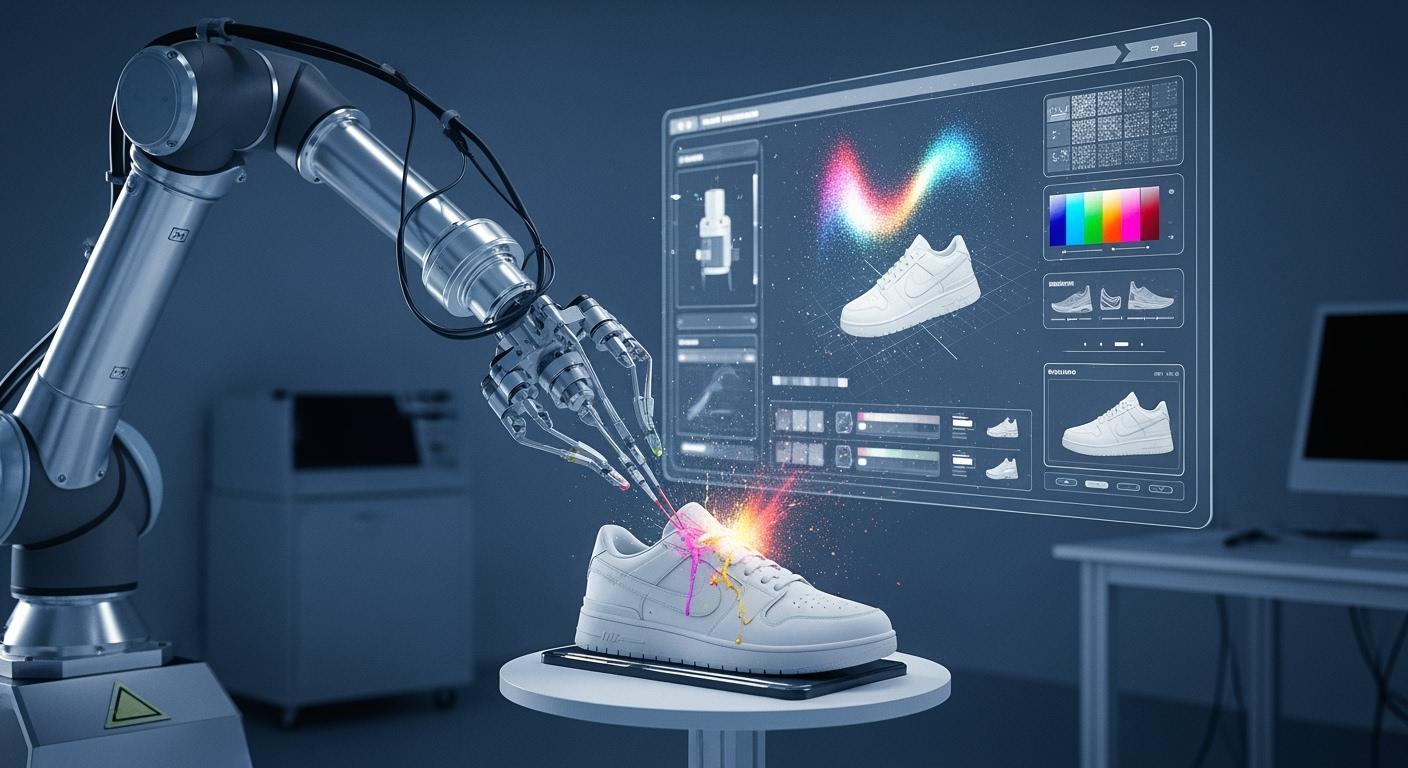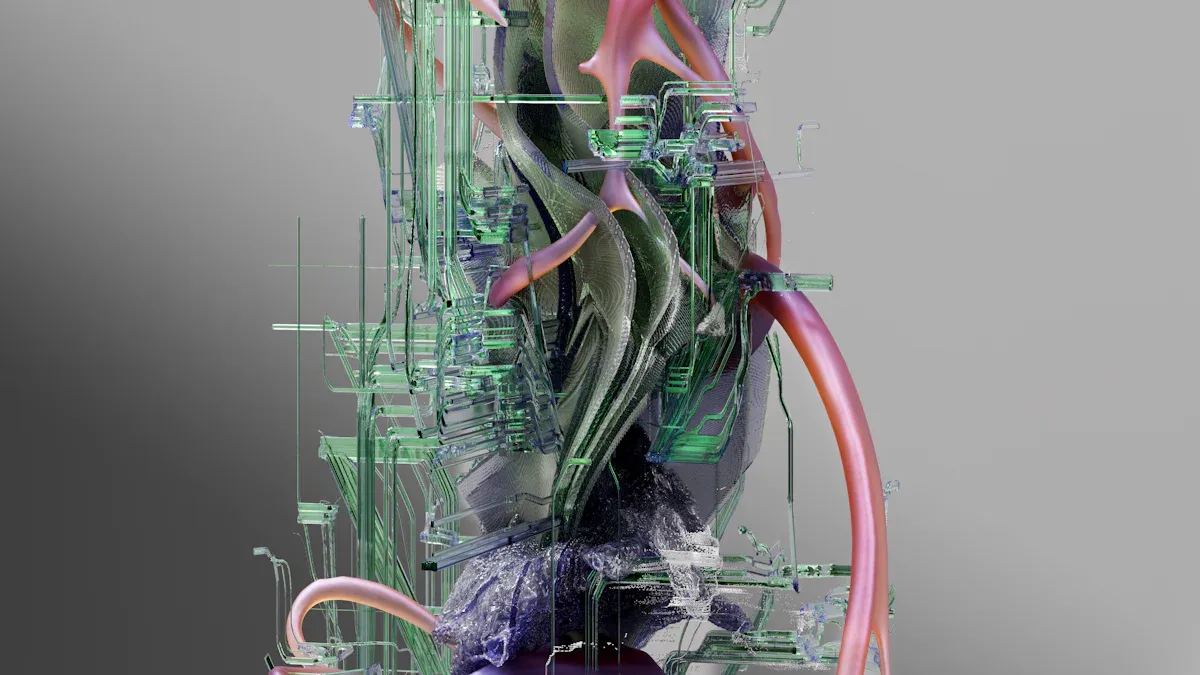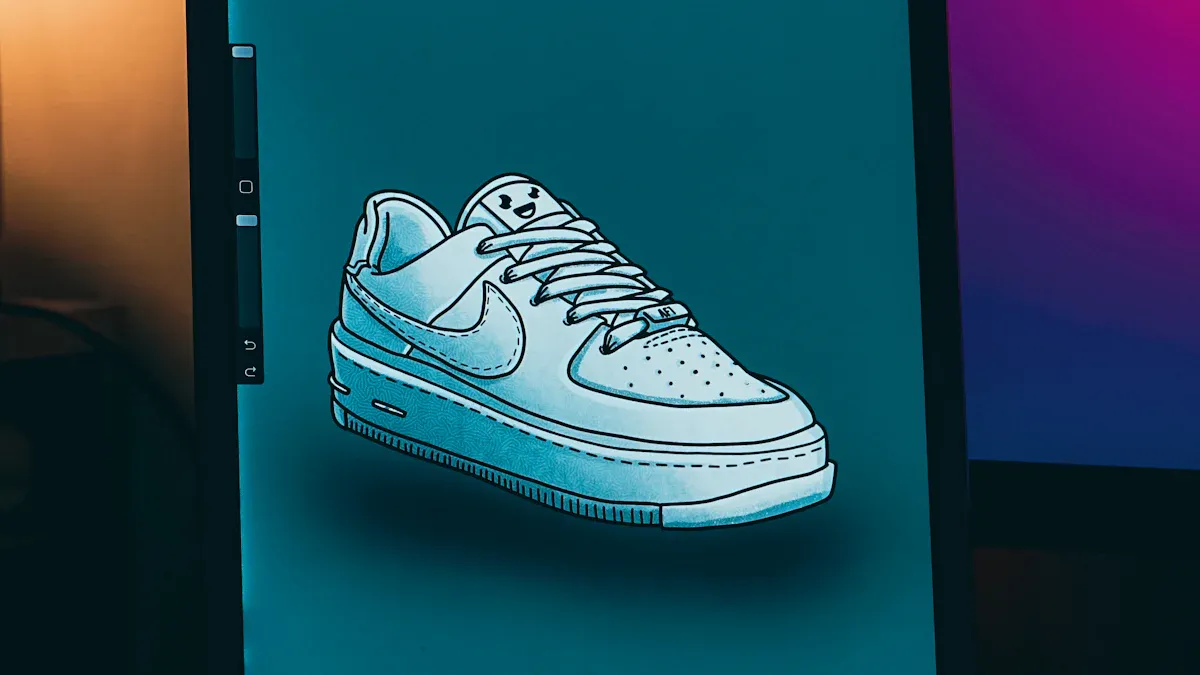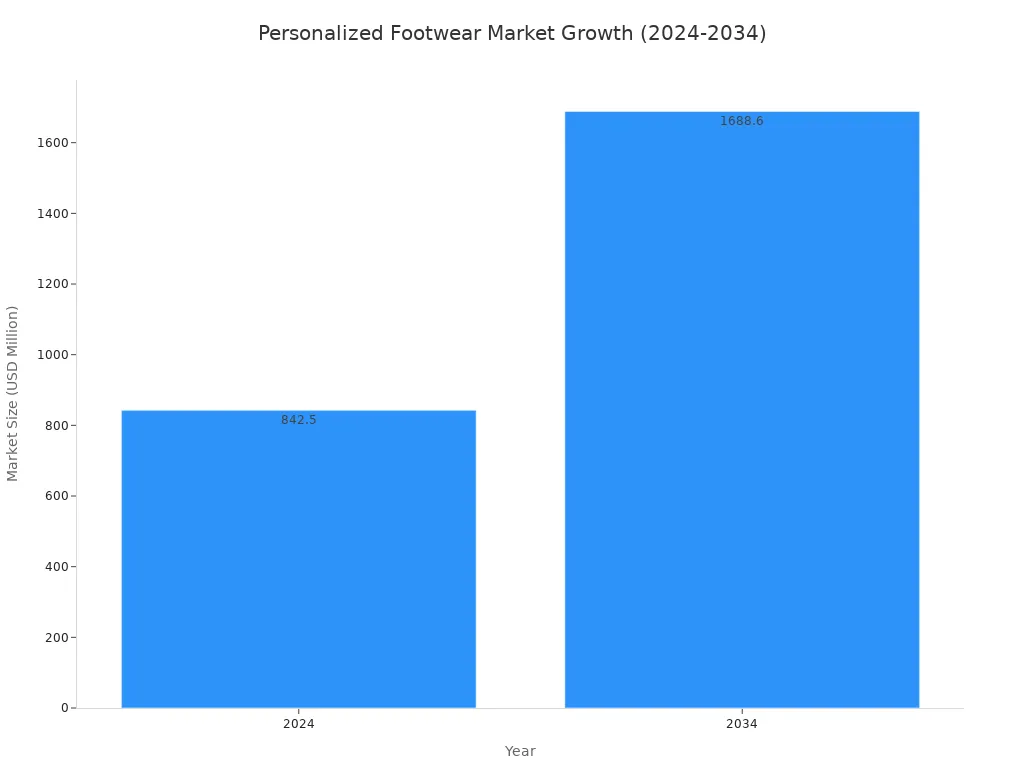
Automated colorway creation is a definitive part of footwear's future. It does not replace human designers. Instead, it acts as a powerful new tool in their creative toolkit. This technology provides unparalleled speed, unlocks new creative possibilities, and offers data-driven market insights. The AI in fashion market is expected to grow from $1.75 billion in 2025 to $6.8 billion in 2029, signaling the industry's rapid adoption of these advanced systems.
The Driving Forces Behind Automation
Three main factors push the footwear industry toward automation. These forces are the market's demand for speed, the quest for expanded creativity, and the power of data-driven decisions.
The Need for Speed
The traditional colorway design process is slow. It can take weeks or even months to finalize a single color scheme. Fast fashion completely changed this dynamic. Its business model requires brands to create and sell new shoe styles quickly to stay competitive. This pressure forces companies to launch multiple collections each year, making long design timelines impractical.
Automated systems offer a direct solution. They reduce the colorway development cycle from weeks to mere hours or days. Major footwear brands already use this technology to accelerate their speed-to-market.
- Adidas uses AI-driven design and automated manufacturing for products like its Futurecraft 4D line. This greatly reduces production lead times.
- Nike implements AI with AR-powered foot scanning. This tool ensures accurate sizing and improves overall efficiency.
- Prada partnered with Accenture to create a digital twin platform. It allows for real-time online shoe customization and previews.
These innovations enable brands to respond almost instantly to market trends and produce special editions based on current consumer demand.
Unlocking New Creativity
Human designers are limited by experience, personal taste, and established color theory. An AI, however, has no such biases. It can generate thousands of unique color combinations in minutes. Many of these suggestions are unexpected and fall outside conventional design rules. This process opens up a vast new landscape of creative possibilities.
Designer as Curator: The designer’s role shifts from pure creator to expert curator. They can sift through hundreds of AI-generated options, identify the most compelling concepts, and refine them with their artistic vision and brand knowledge.
Automated colorway creation gives designers a powerful brainstorming partner. It pushes creative boundaries and helps them discover palettes they might never have considered on their own.
Data-Driven Design
A great design must also sell. AI gives brands a powerful tool to create colorways with a higher probability of commercial success. These systems analyze massive amounts of data to identify emerging trends and predict consumer preferences. This removes much of the guesswork from the design process.
AI models are trained on diverse data sources to understand what colors people want. Key sources include:
- Social media platforms for real-time trend spotting
- Online surveys to gather broad preference data
- Social listening to capture organic conversations about color
- Point-of-sale data to see what is actually selling
- Focus group feedback for qualitative insights
By analyzing this information, AI can generate colorways that align with current market demand. This data-driven approach helps brands reduce financial risk and create products that resonate deeply with their target audience.
How Automated Colorway Creation Actually Works

Automated colorway creation seems like magic, but it relies on specific types of artificial intelligence. The process involves powerful AI models generating ideas and human designers guiding the final outcome. This collaboration blends computational power with artistic expertise.
The Role of Generative AI
Generative AI is the engine behind this technology. It creates new content, like images or text, based on the data it learned. Two main types of models are popular for creating footwear designs: Generative Adversarial Networks (GANs) and Diffusion models.
- Generative Adversarial Networks (GANs) use a two-part system. A "generator" creates new shoe designs. A "discriminator" then compares these new designs to a library of real shoe images. The discriminator tries to spot the fake designs. This competition forces the generator to create increasingly realistic and high-quality images.
- Diffusion Models work differently. They take a clear image and slowly add digital noise until it is unrecognizable. The AI then learns how to reverse this process. It can start with random noise and carefully remove it step-by-step to build a brand-new, coherent image. Popular tools like DALL-E 2 and Stable Diffusion use this method.
These AI systems do more than just place random colors on a shoe. They use advanced techniques to give designers precise control. A machine learning method called disentanglement allows the AI to isolate color from other design features, like shape or texture. This means a designer can change a shoe's color without accidentally altering its structure. The AI also uses specific color encoding systems, such as CIELab, to understand and represent colors with scientific accuracy.
The Designer as Curator
The designer's job does not disappear. It evolves. With AI, the designer becomes a director or a curator. They guide the creative process instead of starting from a blank page. They use their expertise to steer the AI and select the best possible results.
Designers interact with generative AI tools through user-friendly interfaces. These platforms provide several ways to control the output:
- Initial Input: A designer can start by proposing a specific color or theme. The AI uses this input as a starting point for its suggestions.
- Control Panels: Designers use panels with sliders, presets, and style options to refine the AI's creations. They can directly adjust parameters like color, tone, and material appearance.
- Iterative Process: The AI generates a set of color schemes. The designer reviews them, picks the most promising ones, and provides feedback for the next round of generation. This back-and-forth continues until the design is perfect.
The designer's expertise is crucial for evaluating the AI's output. They don't just pick the prettiest option. They judge the generated designs based on professional criteria.
When sifting through hundreds of AI-generated options, a designer assesses several key factors. They check for creativity, looking for designs that feel innovative rather than conservative or similar to existing products. They evaluate prompt implementation, or how well the AI followed their initial instructions. Finally, they consider feasibility. A design must be practical for production and comfortable for the wearer. The designer ensures the AI's material choices are realistic and that the final shoe can actually be manufactured and worn.
From Concept to Custom Kicks: AI Tools in Action

AI technology is moving from theory to practice. New tools now allow anyone to design shoes. Professionals can speed up their workflows. Customers can create their own unique products. This technology is changing how shoes are designed, made, and sold.
AI Sneaker Generators
Anyone can now be a shoe designer thanks to accessible AI platforms. Many of these tools are free and do not require a login for basic use. This opens up shoe design to a wider audience. Viral trends can even start from these public generators. The "Dainty Nike Sneakers" design, for example, gained huge popularity on social media after being created with AI.
Popular AI Sneaker Generators 👟
- Imajinn AI: A free platform where users can design, share, and vote on AI-generated sneakers.
- getimg.ai: Offers a shoe design generator with free daily credits, making it easy to start creating.
- AI Shoes Studio: Provides a set number of free designs each month for users to experiment with.
From Sketch to Digital Render
Professional designers can also use AI to improve their process. They can turn a simple hand sketch into a detailed 3D model. This technology bridges the gap between initial ideas and final products. Designers upload a 2D drawing. The AI then generates a professional 3D render. This model can be used for automated colorway creation and virtual prototyping. Several tools offer this capability.
- FluxAI creates 3D models from sketches or text descriptions.
- Imgto3D.ai converts 2D drawings into 3D files compatible with software like ZBrush.
- Meshy is an AI toolbox that can generate 3D assets with realistic textures from a simple image.
Platforms for Personalization
Brands are using AI to offer customers deep personalization. This empowers enthusiasts to create one-of-a-kind, made-to-order shoes. Nike's "Nike By You" platform is a leading example. It uses 3D technology and AI to let customers choose colors, materials, and even add custom text. The "Nike Maker Experience" even allows shoppers to design and receive a custom sneaker in just a few hours.
This trend is driving significant market growth. The demand for unique footwear is rising quickly.
| Metric | Value |
|---|---|
| Market Type | Custom Shoes |
| Estimated Market Size (2024) | USD 842.5 million |
| Projected Market Size (2034) | USD 1,688.60 million |
| CAGR (2024-2034) | 7.20% |

The Challenges and Inherent Limitations
AI offers incredible speed and variety, but it is not a perfect solution. The technology has clear limitations. Designers must understand these challenges to use AI effectively. Key issues include preserving the human element in design and avoiding a future where all shoes look the same.
Preserving the 'Human Touch'
Great shoe design is about more than just colors. It involves storytelling, culture, and emotion. AI cannot understand these deep human concepts. Shoes often reflect a person's identity and carry a unique story. For example, the 'Diwali Noir' collection honors South Asian and Middle Eastern traditions through its design. An AI lacks the cultural awareness to create such a meaningful product on its own.
The main question I ask before designing anything is, what and who is this for? What is the meaning and inspiration behind what you are about to create? With every product, there is usually a story as to why you want this to exist. I believe the storytelling aspect is the most important part of a design. It makes people want to buy the shoe.
The Air Jordan 1 'Banned' is a perfect example of storytelling's power. The NBA was concerned about Michael Jordan's red and black sneakers in 1984. The league's rule required shoes to be mostly white. Nike used this controversy in a brilliant marketing campaign. It created a narrative of rebellion that made the shoe an icon. The story, not just the colorway, sold the shoe and built a culture around it.
The Risk of Homogeneity
There is a risk that over-reliance on AI could make shoe designs less original. Most AI models train on the same public data of existing shoes. This can lead to conservative or similar-looking results. Experts note that AI often relies on existing shoe stereotypes to determine a shape. This can limit true innovation.
AI also struggles with specific details that give a shoe character.
- Complex Textures: AI finds it hard to create sharp, precise details like the fine threads in woven fabric or the consistent grain of wood.
- Seamless Patterns: It often fails to make patterns that repeat perfectly without visible seams or color shifts.
- Human Intuition: An AI lacks the artistic sense to know when a design "feels" right or has the correct balance.
To avoid creating generic products, designers must use AI as an inspirational tool, not a final creator. They can refine AI suggestions with their own creativity and brand knowledge. This ensures the final product remains unique and compelling.
The future of shoe design is a hybrid model. It merges human creativity with powerful automated systems. Automated colorway creation provides the speed and variety the industry needs. Designers contribute the essential story, cultural meaning, and final approval. This partnership blends the best of both worlds.
The most successful designers and brands will be those who master the collaboration between human artistry and artificial intelligence. This synergy will define the next generation of footwear. 👟
FAQ
Will AI replace human shoe designers?
No, AI will not replace human designers. It acts as a powerful tool. Designers use AI for ideas and speed. They then provide the final creative vision, cultural context, and storytelling. This creates a human-AI partnership.
How can I try AI shoe design myself?
Many free platforms let anyone design shoes. Websites like Imajinn AI and getimg.ai offer easy-to-use sneaker generators. Users can create and share unique designs without needing special skills or software.
What is the biggest advantage of AI for shoe companies?
The main advantage is speed. AI reduces the design process from weeks to hours. This allows brands to quickly respond to market trends, create new styles, and meet consumer demand much faster than traditional methods.
What is the main risk of using AI for colorways?
The biggest risk is homogeneity, or making designs that look too similar. AI models train on existing shoe data. Over-reliance on AI could lead to less original and more conservative styles across the industry.
See Also
AI-Powered Dynamic Safety Stock: Optimizing 2025 Fashion Retail Solutions
Sustainable Fashion: AI Innovations for a Greener Global Industry
Robotic Insights: Unraveling the Complexities of Global Fashion Demand
AI's Role in Managing Viral Trends Within the Fast Fashion Industry
Transformative Impact of AI Sensors on the 2025 Fashion Supply Chain